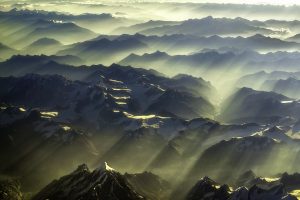 Landscape photography is where the colour of the cloud changes every second, the winds blow the way they wish, the light does not come with a switch and the subject does not pose. Nothing stays in the control of the photographer while he or she is amidst the woods. Debraj Chakraborty from Silchar, Assam has mastered this tough art and gained recognition from across the region. Recently his photos from Meghalaya’s Sohra were featured in the Hello 6E, the in-flight magazine of IndiGo Airlines along with another feature in Namaste AI of Air India on the Dzukou Valley.
Landscape photography is where the colour of the cloud changes every second, the winds blow the way they wish, the light does not come with a switch and the subject does not pose. Nothing stays in the control of the photographer while he or she is amidst the woods. Debraj Chakraborty from Silchar, Assam has mastered this tough art and gained recognition from across the region. Recently his photos from Meghalaya’s Sohra were featured in the Hello 6E, the in-flight magazine of IndiGo Airlines along with another feature in Namaste AI of Air India on the Dzukou Valley.
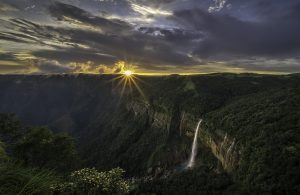 Debraj Chakraborty is not just a photographer; he’s a storyteller who captures the soul of landscapes, especially those nestled in the untouched corners of North East India. With over a decade of experience and a deep-rooted connection to the region, his work has not only earned him accolades – in 2018, Meghalaya Government honoured him for promoting tourism through photography. Chakraborty’s photos are even framed at the ISRO guest house (NE-SAC, Umiam) in Meghalaya, and recently, an agency contacted him to purchase photos for the Meghalaya Secretariat under the Tourism Department.
Debraj Chakraborty is not just a photographer; he’s a storyteller who captures the soul of landscapes, especially those nestled in the untouched corners of North East India. With over a decade of experience and a deep-rooted connection to the region, his work has not only earned him accolades – in 2018, Meghalaya Government honoured him for promoting tourism through photography. Chakraborty’s photos are even framed at the ISRO guest house (NE-SAC, Umiam) in Meghalaya, and recently, an agency contacted him to purchase photos for the Meghalaya Secretariat under the Tourism Department.
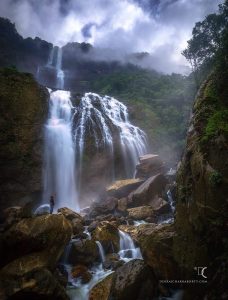 Sunday Shillong dives in to explore the mind of a man who sees nature as his canvas and the camera as his paintbrush, as Chakraborty reveals some of the stories behind his photos. Here are the excerpts from the conversation:
Sunday Shillong dives in to explore the mind of a man who sees nature as his canvas and the camera as his paintbrush, as Chakraborty reveals some of the stories behind his photos. Here are the excerpts from the conversation:
SS: Congratulations on your recent photo feature on monsoon in Sohra in IndiGo’s inflight magazine “Hello 6E”! What are your thoughts on that?
DC: Thank you! Photography has been my passion for over a decade, and Meghalaya holds a special place in my heart. It’s close to my home, and I’ve visited countless times. Often, I capture moments and share them online, which sometimes leads to magazines and publications reaching out for those images. As an enlisted photographer with agencies that publish for IndiGo and Air India, when they have themes focused on the North East, they reach out to me. That’s how the recent feature came about.
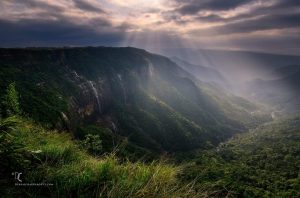 SS: You’ve discovered and captured places that weren’t even on the tourist map back then. How did you find them?
SS: You’ve discovered and captured places that weren’t even on the tourist map back then. How did you find them?
DC: Over the years, I’ve built strong connections with the locals. Around 2010-11, when I first explored Meghalaya, there were hardly any photographers or landscape explorers venturing there. I particularly love Sohra, which in those years was a quiet place with only a few guest houses. I stayed at Sa-I-Mika Resort, where I befriended the manager, Atanu Borgohai, who helped me connect with local boys. They guided me to hidden waterfalls, streams, and trails, which I then photographed and shared online. During the Orkut era and later on Facebook, these images amazed people and created a buzz.
 In 2012-13, I discovered the Krang Suri Waterfalls on the Meghalaya Tourism website, but it was relatively unknown. I reached out to a local reporter from Jowai, who warned me about the leech-infested area but agreed to guide me. We trekked through a slippery, vine-covered path, and when we finally arrived, the waterfall was completely deserted. I captured some stunning photos that became an overnight sensation, transforming the site into a popular tourist destination.
In 2012-13, I discovered the Krang Suri Waterfalls on the Meghalaya Tourism website, but it was relatively unknown. I reached out to a local reporter from Jowai, who warned me about the leech-infested area but agreed to guide me. We trekked through a slippery, vine-covered path, and when we finally arrived, the waterfall was completely deserted. I captured some stunning photos that became an overnight sensation, transforming the site into a popular tourist destination.
SS: Your recent work has focused on landscapes of the Northeast. Is there a special connection?
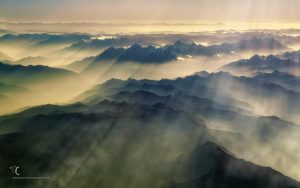 DC: As a native of the North East, I have a soft spot for it. While many places in mainland India are well-explored, this region still holds a mystical allure, and many people think it’s inaccessible. As a photographer, I feel it’s important to promote my region. I focus on places like Nagaland, Manipur, Sikkim, and Meghalaya because they are less explored.
DC: As a native of the North East, I have a soft spot for it. While many places in mainland India are well-explored, this region still holds a mystical allure, and many people think it’s inaccessible. As a photographer, I feel it’s important to promote my region. I focus on places like Nagaland, Manipur, Sikkim, and Meghalaya because they are less explored.
SS: There are perceptions about safety concerns in the North East. Have you ever felt unsafe in the remote areas you visit?
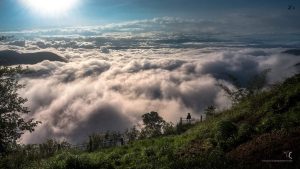 DC: I always prioritise safety by connecting with locals. When exploring unfamiliar places, I hire a local guide who understands the language and customs. I’ve never faced discrimination personally, and over the years, I’ve made great friends within the Khasi community. In Manipur, I have been to some remote interiors of Ukhrul, including the village of Isak Muivah (of the National Socialist Council of Nagaland-NSCN) to shoot the rural life there. I went to the village headman’s home, who invited me over for lunch. By respecting local customs and building relationships, I’ve never encountered serious safety issues.
DC: I always prioritise safety by connecting with locals. When exploring unfamiliar places, I hire a local guide who understands the language and customs. I’ve never faced discrimination personally, and over the years, I’ve made great friends within the Khasi community. In Manipur, I have been to some remote interiors of Ukhrul, including the village of Isak Muivah (of the National Socialist Council of Nagaland-NSCN) to shoot the rural life there. I went to the village headman’s home, who invited me over for lunch. By respecting local customs and building relationships, I’ve never encountered serious safety issues.
SS: Can you share about your journey in photography?
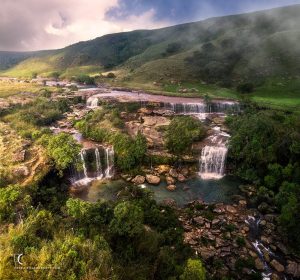 DC: My father, a travel enthusiast, introduced me to cameras during our family vacations. The first camera I used was his Yashica Electro. Later, while running a computer and camera business, I handled a large order for high-end DSLRs for the Silchar Air Force, which gave me my first hands-on experience with advanced cameras. I wanted to learn more about these types of equipment, so I went on the Internet and stumbled upon stunning landscape photos, particularly from the Oregon Coast of America. I was inspired to explore photography further. As a student, I also learned Fine Arts, mainly oil painting, focusing on landscapes. Eventually, I started photographing local areas like Chatla (wetlands in Cachar, Assam), and Son Beel (largest wetlands of Assam) to capture nature with my camera. I felt that was a form of artistic expression.
DC: My father, a travel enthusiast, introduced me to cameras during our family vacations. The first camera I used was his Yashica Electro. Later, while running a computer and camera business, I handled a large order for high-end DSLRs for the Silchar Air Force, which gave me my first hands-on experience with advanced cameras. I wanted to learn more about these types of equipment, so I went on the Internet and stumbled upon stunning landscape photos, particularly from the Oregon Coast of America. I was inspired to explore photography further. As a student, I also learned Fine Arts, mainly oil painting, focusing on landscapes. Eventually, I started photographing local areas like Chatla (wetlands in Cachar, Assam), and Son Beel (largest wetlands of Assam) to capture nature with my camera. I felt that was a form of artistic expression.
SS: Does having an expensive camera or advanced gear make a good photographer?
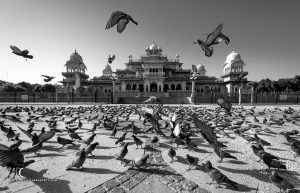 DC: Great photos were made before advanced cameras existed. Having said that, some of the awards I won were because of the cameras I used. In 2012, a mid range Nikon D-90 that had won me a place in a competition was because of the composition, which is the most important part of any good photo. Expensive gear can help with better quality in challenging conditions, but it’s the photographer’s skills that truly matters.
DC: Great photos were made before advanced cameras existed. Having said that, some of the awards I won were because of the cameras I used. In 2012, a mid range Nikon D-90 that had won me a place in a competition was because of the composition, which is the most important part of any good photo. Expensive gear can help with better quality in challenging conditions, but it’s the photographer’s skills that truly matters.
SS: You often go to great lengths for the perfect shot, like pitching a tent for days or wading submerged through the waters. How extreme does one have to get for landscape photography?
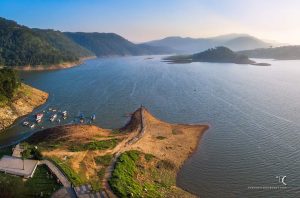 DC: As a landscape photographer, one is always at the mercy of nature. It is unlike a studio set-up where one can adjust their lights as per one’s demand. I always try to make the best out of whatever the mood of the weather is. One has to take risks.
DC: As a landscape photographer, one is always at the mercy of nature. It is unlike a studio set-up where one can adjust their lights as per one’s demand. I always try to make the best out of whatever the mood of the weather is. One has to take risks.
Once in Manipur’s Loktak Lake, a few friends and I stayed in a hut to capture some good photos of the fishermen in action. On a whim, we decided on doing something unusual and took some underwater shots. While doing that, I forgot about the sticky mud beneath and got stuck knee-deep. I could not move or get out of the water. My friends then came with some fishermen and two boats to rescue me. So, we pass through such instances to make a shot look better. These situations test one’s limits, but they also make for great stories and photos.
SS: Photography aside, you’re also into bonsai. Tell us about it.
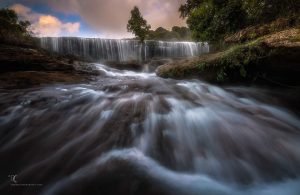 DC: I was introduced to Bonsai by my uncle, a hobbyist. Fascinated by his collection, I too started this art but lost touch as I moved out of home for studies. I resumed upon my return and have been practising Bonsai for 10-15 years. My collection is small, but I aim for quality.
DC: I was introduced to Bonsai by my uncle, a hobbyist. Fascinated by his collection, I too started this art but lost touch as I moved out of home for studies. I resumed upon my return and have been practising Bonsai for 10-15 years. My collection is small, but I aim for quality.
SS: Do you have any message for young photographers?
DC: Don’t rush into expensive gear. Master the basics first. Photography is a creative art, and your mind is your most powerful tool. It’s also a vast field, so find your niche, whether it’s landscape, fashion, or wildlife. Take more photos, explore different perspectives, and draw inspiration from others without copying. Remember, post-processing is an art—know the limits. Over time, this balance will become instinctual.
—-End of Interview—-
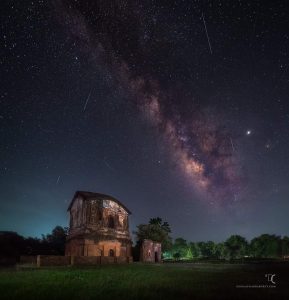 As Debraj Chakraborty continues to explore and document the untamed beauty of North East India, his journey from a curious traveller with a simple camera to an acclaimed photographer has been driven by a deep love for landscapes and an unwavering commitment to capturing them authentically. For Chakraborty, photography is more than just a profession.
As Debraj Chakraborty continues to explore and document the untamed beauty of North East India, his journey from a curious traveller with a simple camera to an acclaimed photographer has been driven by a deep love for landscapes and an unwavering commitment to capturing them authentically. For Chakraborty, photography is more than just a profession.
(Interviewed by Jnanendra Das)



